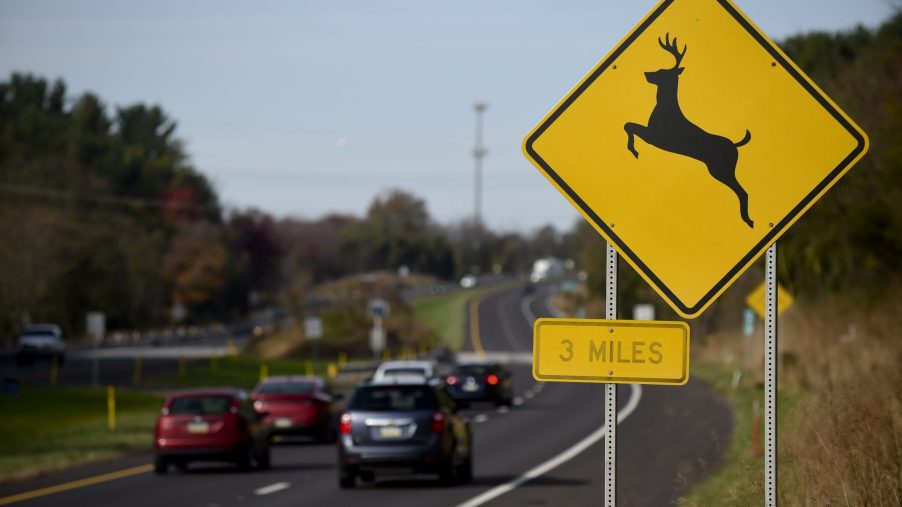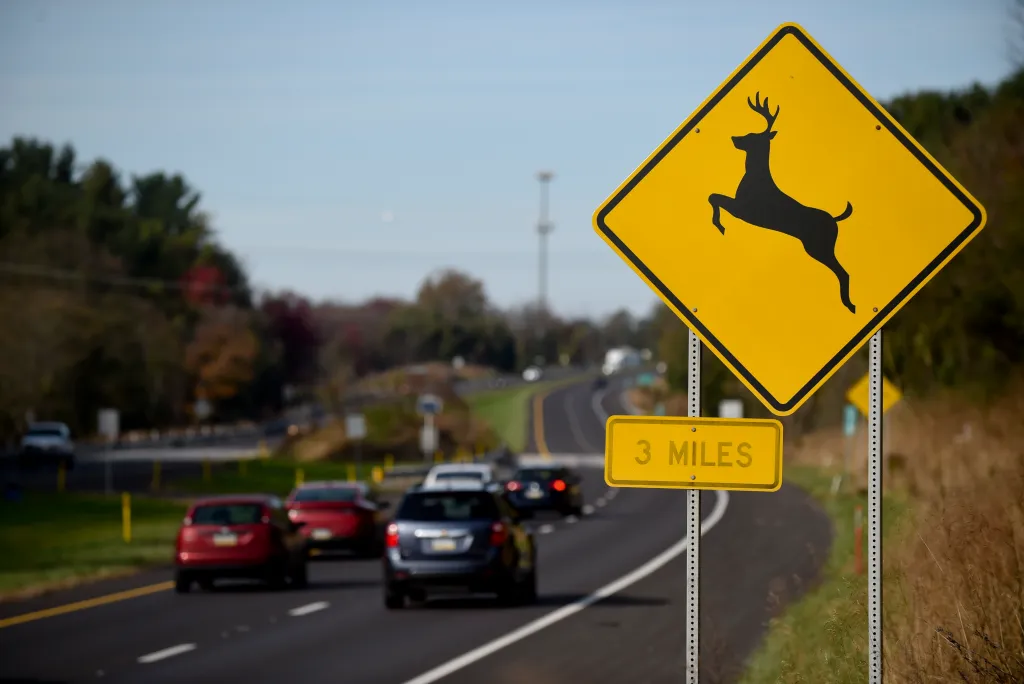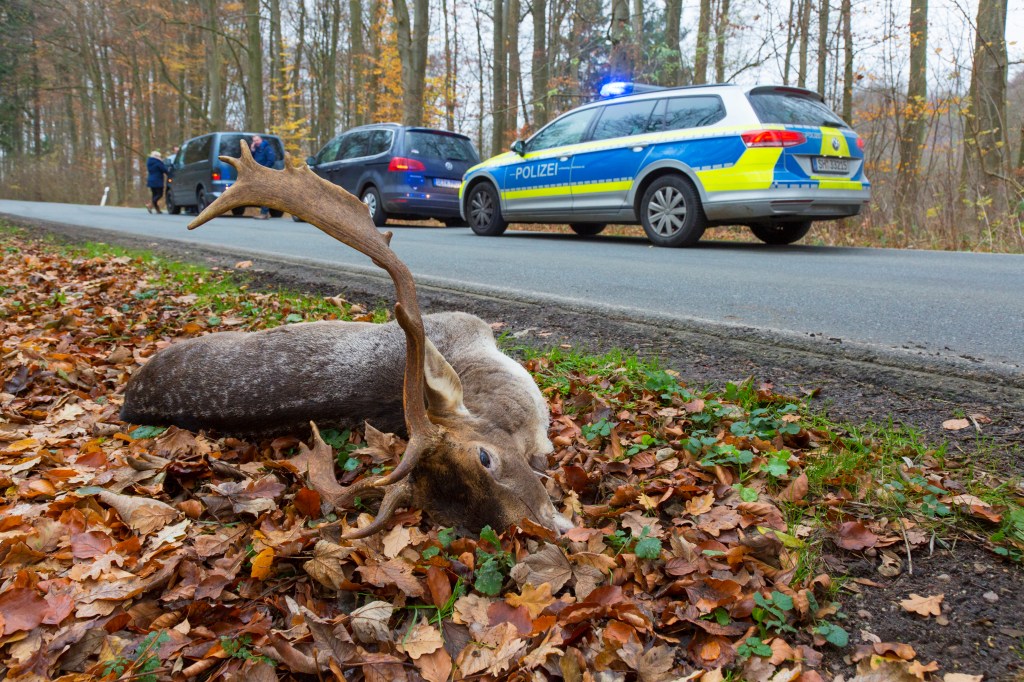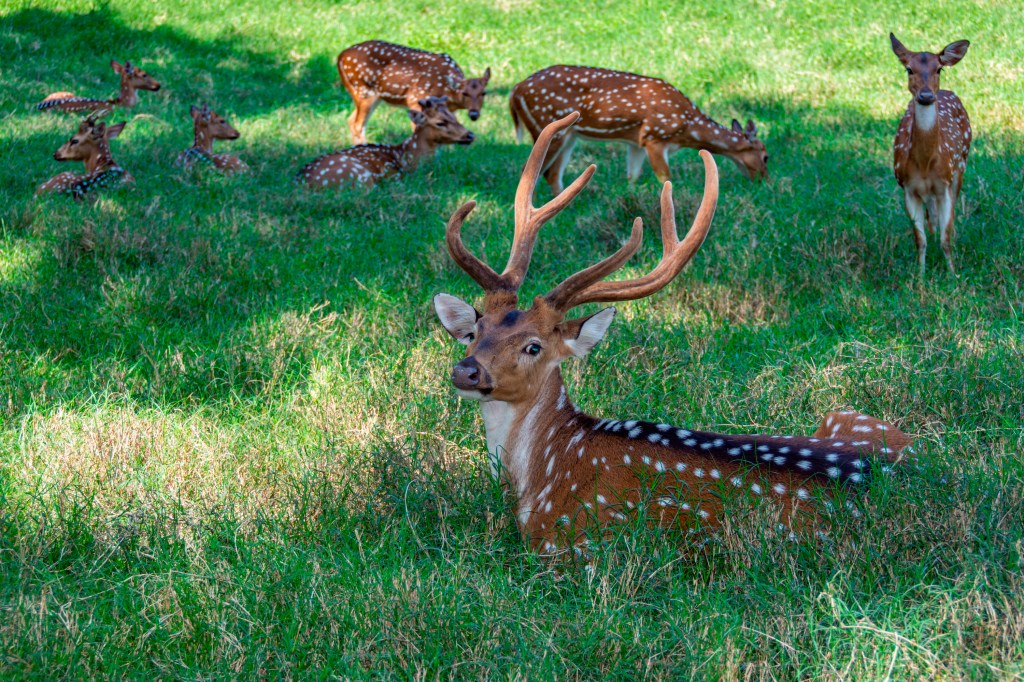
You Have the Highest Chance of Hitting a Deer in These States
The cool fall air is blowing in, and the leaves are changing. But as the temperatures drop, your chances of hitting a deer rise. So if you find yourself driving down country backroads, you’ll want to keep your eye out. Especially if you live in any of these states.

You have a 1 in 37 chance of hitting a deer in West Virginia
According to Consumer Reports, every driver had a 1 in 37 chance of hitting a deer in West Virginia. That means that if you made at least one drive every day, you’d have a chance of hitting a deer almost every month. Montana is a close second, at 1 in 39. Then there’s a slight gap for South Dakota, with a 1 in 48 chance. And after recording the odds of every state (except Hawaii, since there are no deer there) and taking the average, US drivers have a 1 in 115 chance of hitting a deer.
Obviously, it depends where you live. States out west where there are fewer deer have the lowest odds in the country. Drivers in Nevada, for example, have a 1 in 430 chance of hitting a deer.
These numbers were calculated by looking at deer collisions from July 1st to July 30th of 2021. But these aren’t the only startling deer statistics that you should be aware of.
About 120 people die from deer-related accidents every year

While humans hunt millions of deer every year for sport, the deer get a bit of revenge, cause about 120 fatalities every year. Though, they’re called “deer-related accidents” for a reason, as chances are, the drivers didn’t die because they hit the deer.
When many people see a deer, their natural instinct is to swerve out of the way. And while this might sound cruel, it’s better to hold your course and slam on the brakes, even if you end up crashing into the deer. Swerving can cause you to lose control of the vehicle, crashing into something like a tree. And there’s a significant difference between hitting a 1,000 lb solid tree and hitting a 300 lb deer.
But the first step to avoiding collisions with deer, and death in general, is to follow these safety tips, and remember some facts about how deer operate.
What you need to know to avoid hitting deer

There have been countless scientific studies to learn more about deer behavioral patterns, and the results have shaped road safety. For example, if you see a deer crossing sign, that’s because researchers have studied the patterns of deer. Just like a commute to work, deer walk the same paths every day. So slow down, and stay alert.
On top of that, research has shown that deer travel in packs. So if you see one deer crossing the road, slow down, because there’s probably more. And in order to see these deer well ahead of time, be sure to use you high beams (unless another car is coming).
Collisions with deer spike in the fall, and typically happen from 6 pm to 9 pm and at dusk. That doesn’t mean they don’t happen at any other point in the year or time of the day, but it does mean we’re in the danger zone. So as you rake your leaves and drink your apple cider, be sure to look out of our furry friends when on the road.


